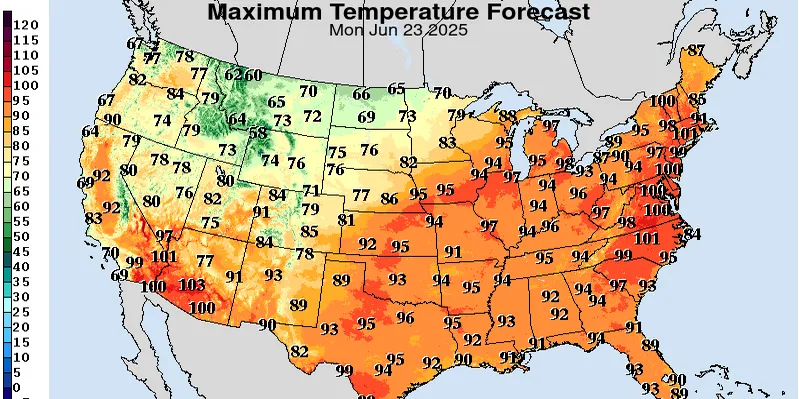
Heatwave incoming: How high will temps go and when will it end?
How did your country report this? Share your view in the comments.
Diverging Reports Breakdown
Heatwave incoming: How high will temps go and when will it end?
AccuWeather estimates 170 million people will experience temperatures at or above 90 degrees. The National Weather Service has issued heat alerts across large swaths of the U.S. Daily high temperatures are forecast to be well into the 90s, with overnight temperatures in the mid-70s. The heat wave will be triggered by a change in the jet stream pattern, Weather.com meteorologist Jonathan Erdman says. “The first significant heat wave of the year can pose more danger,” the Weather Prediction Center says.. Some portions of Glacier National Park could see as much as two feet of snow, the weather service says. The weather service warned of “considerable disruptions to normal activities”
“A dangerous, widespread heat wave will bake the central and eastern U.S., bringing the hottest temperatures of the year and uncomfortably muggy air to the Midwest and Northeast that in some areas could last into much of next week,” Weather.com meteorologist Jonathan Erdman said in an online forecast June 20.
AccuWeather estimates that 170 million people will experience temperatures at or above 90 degrees during the building heat wave into next week.
“The magnitude and longevity of this heat wave will be a shock to the system,” AccuWeather senior meteorologist Chad Merrill said.
Heat alerts from the National Weather Service were in place June 20 across large swaths of the central and eastern U.S.
How long will the heat last?
Following a broiling Friday June 20, in the Plains, the heat will expand over the weekend across portions of the Midwest and Great Lakes.
By Saturday June 21, major heat will expand across the Midwest, and extreme heat impacts will begin in parts of Nebraska, where temperatures could reach triple digits. Extreme levels are defined as rare or long-duration heat with little to no overnight relief, according to the weather service.
The heat is then expected to shift and persist across the Ohio Valley, Northeast and Mid-Atlantic later in the weekend through next week.
AccuWeather said the heat wave will continue to progress eastward, focusing on the Great Lakes, the central Appalachians, the mid-Atlantic and New England.
How hot will it get?
Daily high temperatures are forecast to be well into the 90s, with overnight temperatures dropping only into the mid-70s from the Great Lakes to the East Coast. That will offer little to no relief to those without adequate or reliable cooling, the Weather Prediction Center said. “The first significant heat wave of the year can pose more danger,” the center said.
As the heat builds, people should limit outdoor activity, stay hydrated and ensure access to air conditioning and other cooling areas.
“Heat exhaustion and heatstroke can strike even physically fit individuals in the prime of their lives,” Alex Sosnowski said.
Why so hot? Blame the ‘heat dome’
The heat wave will be triggered by a change in the jet stream pattern, Erdman said in an online forecast.
“Specifically a strong bubble of high pressure aloft known as a heat dome will develop over the eastern U.S. Sinking air near the center of this heat dome suppresses clouds, allowing the intense sunshine this time of year to heat the ground and air above it,” Erdman said.
Southerly and southwesterly winds will also draw hot and humid air from the South into the Midwest and Northeast, he said.
Wait, what? Snow in Montana!
Meanwhile, in a testament to the vast size of the U.S., snow and cold will be the story in Montana. Some portions of Glacier National Park could see as much as two feet of snow, the weather service said.
The weather service warned of “considerable disruptions to normal activities” and “dangerous or impossible conditions. Avoid travel in the impacted areas if possible.”
